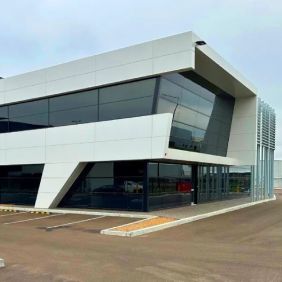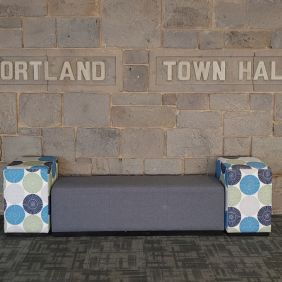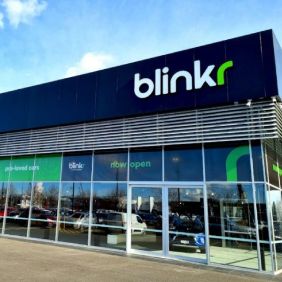The pandemic has forced many companies to rethink their office space needs, and some are now turning to dedicated workspaces as a solution. The new normal has changed our perspective on the way things play out.
You can easily work from home, in your pajamas, with a cup of coffee in one hand and your laptop in the other. But is this really conducive to productivity?
Many people are finding that it’s not, and they’re now looking for dedicated workspaces as an alternative. There are many reasons why dedicated workspaces are here to stay, even after the pandemic is over.
What Are Dedicated Workspaces?
Dedicated workspaces are places where people can go to work, without having to worry about the distractions and disruptions that come with working from home.
working from home.
They’re usually rented by the day, week, or month, and they come with all the amenities you need to be productive, including fast Wi-Fi, comfortable seating, and access to printers and scanners.
Most organizations have found these to be extremely beneficial, as they provide employees with a place to focus on their work without distractions.
Benefits of Dedicated Workspaces
There are many benefits of dedicated workspaces, both for employees and employers.
Some of the most notable benefits include:
- Increased Productivity: One of the biggest advantages of dedicated workspaces is that they can help increase productivity. When you’re at home, there are always distractions that can take your attention away from your work.
But when you’re in a dedicated workspace, you can focus on your work and get more done in a shorter period of time.
- Cost-Effective: Another benefit of dedicated workspaces is that they’re cost-effective. If you have a team of employees, it can be expensive to rent an office space for them.
But with a dedicated workspace, you can rent a space that’s big enough for your team without having to worry about the cost.
- Convenient: Dedicated workspaces are also convenient. They’re usually located in central areas, so you don’t have to worry about commuting to and from work.
And, they come with all the amenities you need to be productive, so you don’t have to worry about bringing your own supplies.
- Professional Environment: Dedicated workspaces also provide a professional environment for employees. When you’re working from home, it can be easy to get distracted by things like your family or your pets.
But when you’re in a dedicated workspace, you can focus on your work and create a professional environment.
- Networking Opportunities: Dedicated workspaces also offer networking opportunities. When you’re working from home, it can be difficult to meet new people.
But when you’re in a dedicated workspace, you can meet other professionals who are working in the same space. This is a great way to make new connections and expand your network.
Drawbacks of Dedicated Workspaces
While there are many benefits of dedicated workspaces, there are also some drawbacks.
Some of the most notable drawbacks include:
- Limited Availability: One of the biggest drawbacks of dedicated workspaces is that they’re often limited in availability. If you’re looking for a space to rent, you may not be able to find one that’s close to your home or office. And, if you do find one, it may not be available for the days or times you need it.
- High Cost: Another drawback of dedicated workspaces is that they can be high in cost. If you’re looking for a space to rent, you may have to pay a premium price.
- Crowded Workspaces: Dedicated workspaces can also be crowded. If you’re looking for a space to work, you may not be able to find a seat. And, if you do find a seat, it may not be in the best location.
- Limited Amenities: Dedicated workspaces may also have limited amenities. If you’re looking for a space to work, you may not have access to all the amenities you need. For example, you may not have access to a printer or a scanner.
- Lack of Privacy: Dedicated workspaces can also lack privacy. If you’re working on a sensitive project, you may not want to be in a space where other people can see your work.
So, should you get a dedicated workspace?
The answer to this question depends on your needs. If you need a space to focus on your work without distractions, then a dedicated workspace may be a good option for you.
But if you’re looking for a space to meet new people and expand your network, then a dedicated workspace may not be the best option.
It’s important to weigh the pros and cons of dedicated workspaces before making a decision. Consider your needs and budget to decide if a dedicated workspace is right for you.
What is The Future of Dedicated Workspaces?
The future of dedicated workspaces is unclear. Some experts believe that they will become more popular in the future, while others believe that they will decline in popularity.
There are a number of factors that will impact the future of dedicated workspaces. One of the biggest factors that will impact the future of dedicated workspaces is the cost.
If the cost of dedicated workspaces continues to rise, then they will become less popular. But if the cost decreases, then more people will be able to afford them and they will become more popular.
Another factor that will impact the future of dedicated workspaces is availability. If there are more spaces available, then they will become more popular. But if spaces are limited, then they will become less popular.
Wrap Up
From all indications, dedicated workspaces are here to stay. But the future is unclear. The cost and availability of dedicated workspaces will play a big role in their popularity.
If you’re looking for a space to focus on your work, then a dedicated workspace may be a good option for you. We will keep an eye and see how these spaces keep unfolding.









